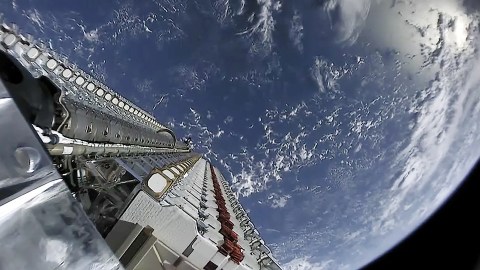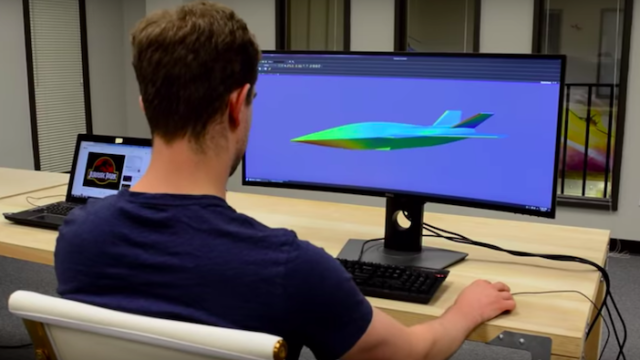Astronomers warn Elon Musk’s satellites could change our night sky

SpaceX
- SpaceX recently launched the first 60 of a planned 12,000 satellites for its Starlink network.
- The network will bring internet connectivity to an additional several billion people.
- Astronomers worry that all the satellites in low orbit will ruin the night sky and hinder science.
SpaceX, led by Elon Musk, recently launched the first batch of its Starlink satellite network into orbit. It was either a remarkable milestone for an audacious plan or the beginning of the end for the night sky as we know it, according to some critics.
While only 60 of the satellites went up into space aboard the Falcon 9 on May 23, the long-term plan is to up that number to around 12,000 by the mid-2020s. The stated goal is for these satellites to offer internet from space, making sure every part of the globe has a broadband connection.
An hour after launch from Cape Canaveral in Florida, the 500-pound satellites went up into orbit, about 340 miles (500 km) above Earth. Their array made for an incredible display, captured here by an amateur astronomer over Netherlands:
Not everyone was feeling optimistic from the launch, however. A number of astronomers have come out to say that crowding the sky with more permanent lights (which might even be visible during the day) is not a technological feat to applaud.
The big difference here is that previous launches generally placed larger communication satellites in fixed high orbits of about 36,000 km and up above the equator. Musk’s network will be in much lower orbit, likely not requiring bulky satellite dishes for contact but also moving quickly around the world. In fact, its first sightings were reported as UFOs.
As the astronomer Michael J. I. Brown of Monash University writes in The Conversation, if all the planned satellites will be above us, there’s a good chance hundreds of them will be visible above the horizon at all times. As they are visible to the naked eye, they could outnumber and outshine the brightest stars.
Marco Langbroek, who captured the train of Starlink satellites on video, said he didn’t anticipate how bright they would be, adding “It really was an incredible and bizarre view to see that whole train of objects in a line moving across the sky.”
Ronald Drimmel from the Turin Astrophysical Observatory in Italy called this a “potential tragedy”.
“The potential tragedy of a mega-constellation like Starlink is that for the rest of humanity it changes how the night sky looks,” said Drimmel. “Starlink, and other mega constellations, would ruin the sky for everyone on the planet.”
As reported in Forbes, astrophysicist Darren Baskill from the University of Sussex in the U.K. also chimed in, warning: “If we can see them [satellites] with our eyes, that means they are extremely bright for the latest generation of large, sensitive ground-based telescopes.”
Indeed, another worry for the astronomers is that the satellites will make it hard for telescopes like the Large Synoptic Survey Telescope in Chile to take obstructed views of the sky; any picture would likely include thousands of satellites. Radio astronomy may also be disrupted by countless satellite signals traveling back and forth.
Next for the Starlink project is to get the satellite count to 800, at which point the network will become operational. Musk sees this network, which can provide internet connectivity for up to 3 billion people, as an important new stream of revenue for SpaceX, coming into existence ahead of similar projects like Amazon’s Project Kuiper from the tech rival Jeff Bezos. That system, called a “constellation” by Amazon, plans to feature 3,236 satellites in low-Earth orbit.
Currently, there are about 18,000 objects tracked in Earth’s orbit, with 2,000 satellites.
For his part, Elon Musk has not ignored the issue, saying he sent a note to the Starlink team to figure out how to make the satellites less reflective, perhaps raising their orbits.





